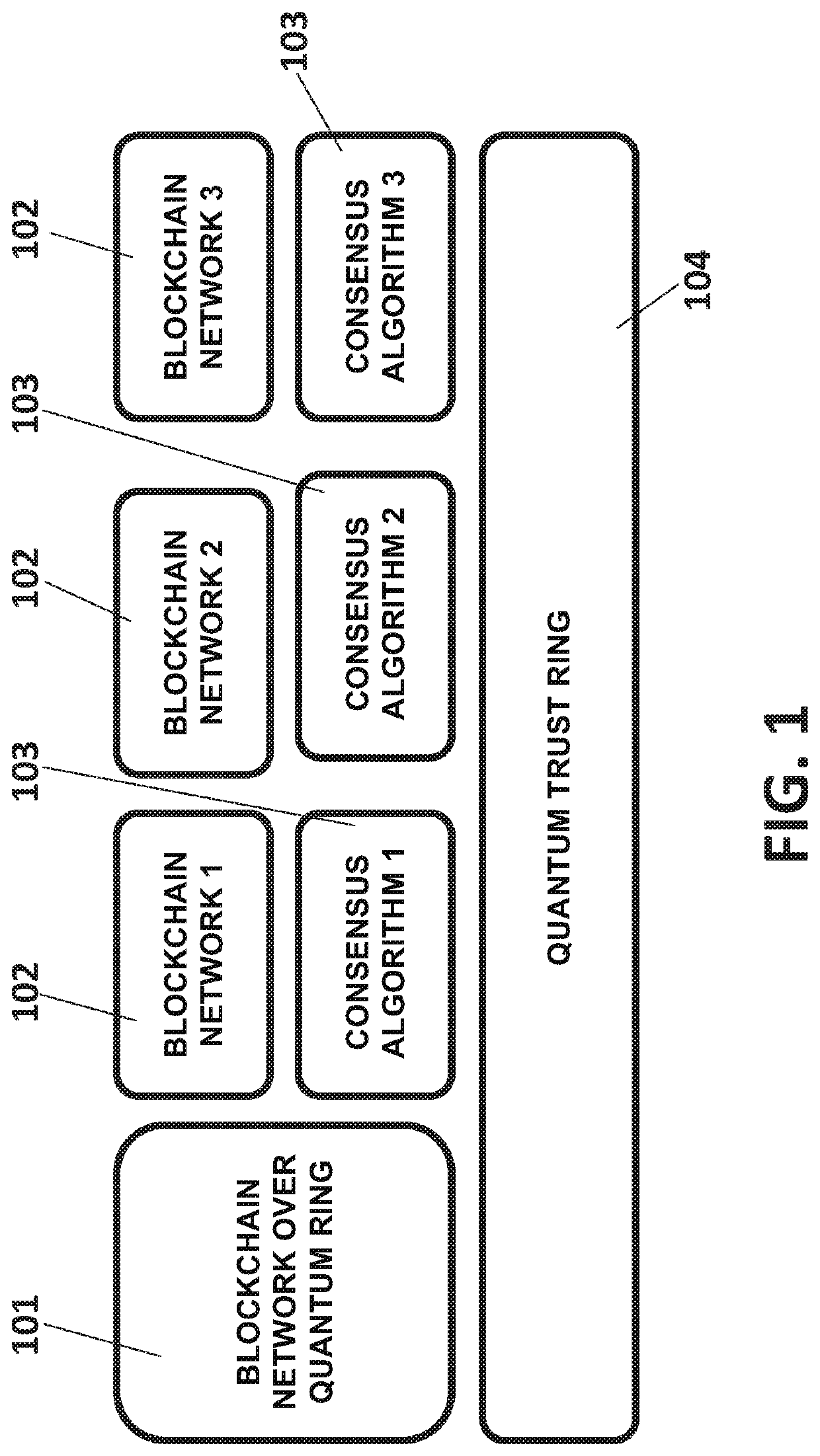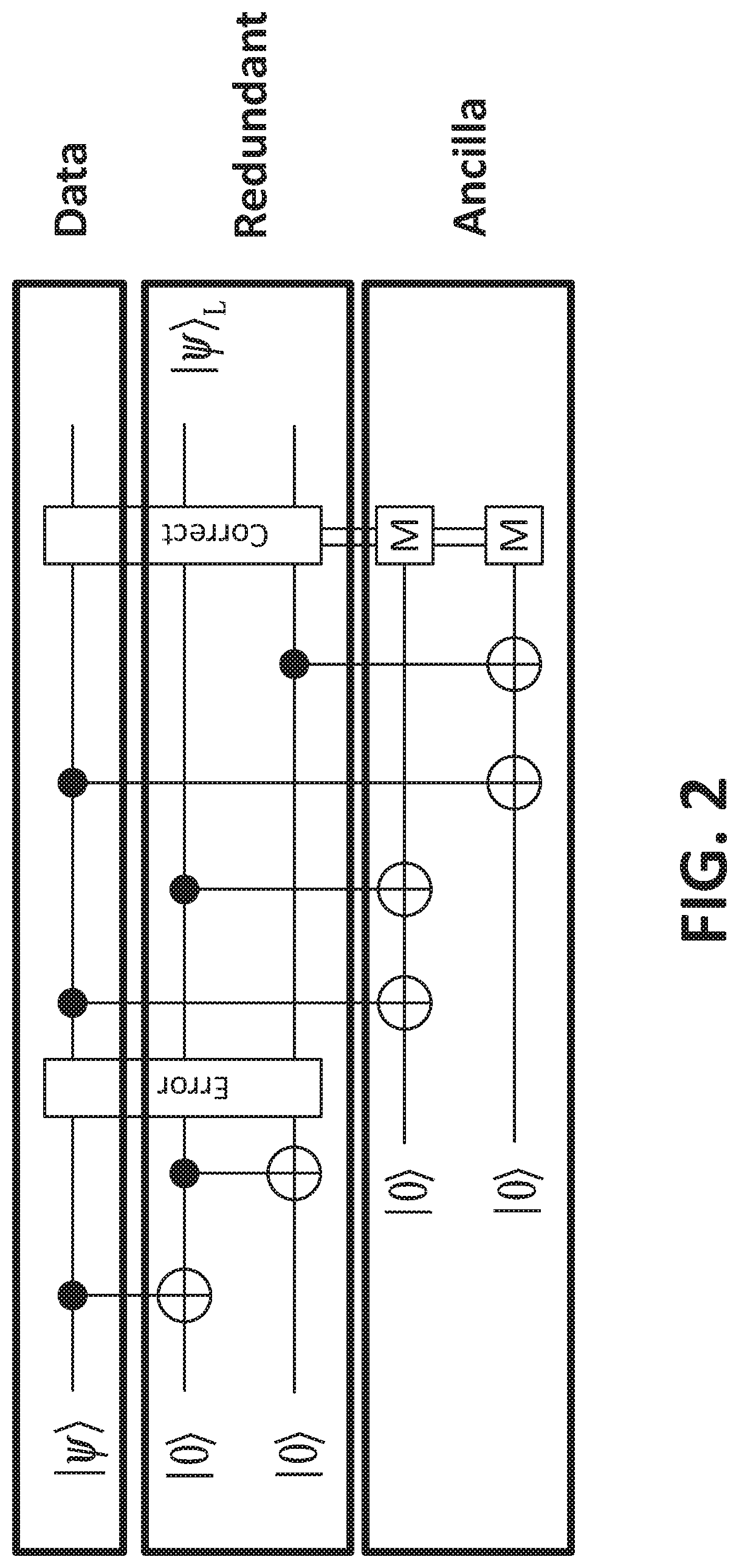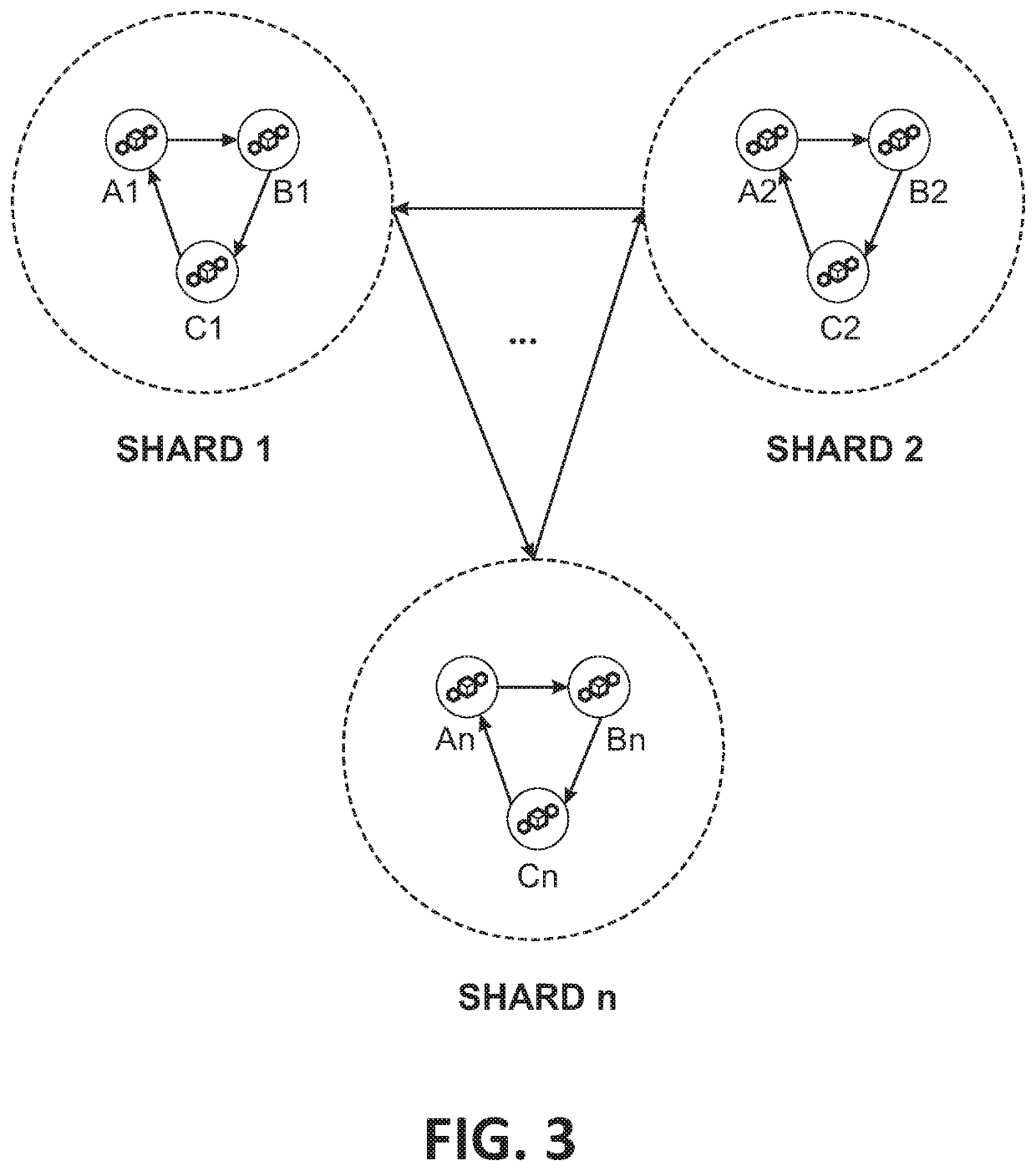Method and system for dlt networks consensus enhancement using quantum computing mechanisms
a quantum computing mechanism and network consensus technology, applied in computing models, instruments, fault response, etc., can solve the problems of outstanding computational energy required for mining, low throughput of consensus algorithms, and inability to achieve consensus algorithms, etc., to achieve the effect of improving basic security, performance and trus
- Summary
- Abstract
- Description
- Claims
- Application Information
AI Technical Summary
Benefits of technology
Problems solved by technology
Method used
Image
Examples
Embodiment Construction
[0083]The present inventions may be embodied in other specific system and / or methods. The described embodiments are to be considered in all respects as only illustrative and not restrictive. In particular, the scope of the invention is indicated by the appended claims rather than by the description and figures herein. All changes that come within the meaning and range of equivalency of the claims are to be embraced within their scope.
[0084]The present invention purposes the implementation of a quantum network layer (called from now on, quantum trust ring) between different nodes underlaying different DLT (e.g. blockchain) networks, consensus algorithms, and distributed systems to offer them an enhanced basic level of security, trust and performance. Each DLT network comprises one or more (usually many of them) nodes (computing nodes); the computing nodes are electronic devices of any type (for example, servers) including databases storage capacity (memory) and processing capacity (p...
PUM
 Login to View More
Login to View More Abstract
Description
Claims
Application Information
 Login to View More
Login to View More - R&D
- Intellectual Property
- Life Sciences
- Materials
- Tech Scout
- Unparalleled Data Quality
- Higher Quality Content
- 60% Fewer Hallucinations
Browse by: Latest US Patents, China's latest patents, Technical Efficacy Thesaurus, Application Domain, Technology Topic, Popular Technical Reports.
© 2025 PatSnap. All rights reserved.Legal|Privacy policy|Modern Slavery Act Transparency Statement|Sitemap|About US| Contact US: help@patsnap.com



